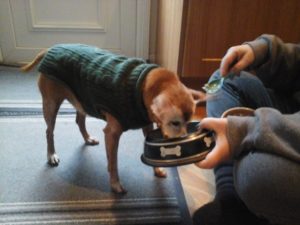
Many of you are dealing with a pup who has lost his appetite, and are struggling with how to get an old dog to eat. I know from my own experience how challenging and worrying that can be. Dementia, medications and some health issues can be blamed, and we’re left trying to figure out how to ensure our pets are getting the nutrients they require.
Every day has become a “will she or won’t she” situation
Red has always loved her food, and that was evident in her 18lb body when she was first brought to the shelter. I should add she’s not meant to weigh more than 10!! Staff had to literally feed her in the bathroom, otherwise she 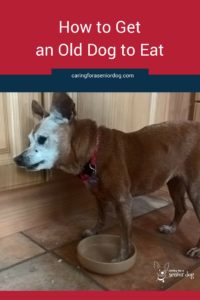 would eat all the other dogs’ food. The fact she was blind didn’t hinder her abilities one bit. Such a talented girl!!
would eat all the other dogs’ food. The fact she was blind didn’t hinder her abilities one bit. Such a talented girl!!
Anyway, since the day we brought her home 8 1/2 years ago she’s been a vacuum cleaner – sucking up anything in her path. For years she ate with gusto, never knowing her to ever lose interest, so I knew if there ever came a time when she turned her nose up at food, she had a problem.
Then the problems started…
Very long story short, she now has trouble eating because of dementia. I feed my dogs set meals, so it’s not like she has to find her way to her food bowls. I have always sat with her on the floor while she ate, and over the past couple of years I’ve been elevating her food and water bowls so she doesn’t have to stretch to reach.
I’m not quite sure if it’s her sense of smell that has changed, she can’t quite figure out what she’s supposed to do with the food or her mood changes. The truth is I think it’s all of the above separately, sometimes in combination.
For a few months she was eating a whole foods home cooked diet, and she gobbled up every bite. She loved it and I thought she was doing well until test results showed high urea levels. The diet was created specifically for her kidney condition but unfortunately my regular vet recommended I go back to her prescription diet. I did and within two weeks her levels were back to normal, and since that was the only change I made…I don’t believe in coincidences!
Here are the things that work for me because she won’t eat her food straight out of the can
I cut it into pieces and bake it. Not only do I use them for treats but also her meal when she won’t eat, and thankfully never turns her nose up at that.
When I give her food from the can I warm it for a few seconds in the microwave on a very low setting.
I hold the bowl quite close to her mouth because sometimes it takes her a few tries until she takes a bite.
Adding some human food helps at times – broccoli, cooked quinoa, cooked rice, raw apple, raw carrot, a bit of chicken.
If I boil chicken for her I pour the “soup” into ice cube trays and freeze them, then defrost a cube as needed and add a little to her bowl.
The importance of taking action
Please, please don’t assume all changes in your dog’s behaviour are natural signs of aging. Often they indicate a problem, and something caught early has a better prognosis. In the case of a senior dog, especially one with health issues who won’t bounce back as quickly as a younger or healthier dog might, it’s extremely important.
If your dog is not eating or seems less enthusiastic than normal, I recommend you contact your vet. It doesn’t mean there’s a health problem, it could be the result of:
- Changes to your dog’s normal routine
- Recently moving house
- The addition of a new family member (2 or 4 legged!!)
- Eating something during a walk or outing that has caused an upset stomach
Reasons why a dog may suddenly lose interest in eating
- Illness
- Nausea due to illness, new medication or eating something he picked up outside
- Dementia
- Dental disease
- Urinary tract infection
- A consequence of aging when sense of smell and taste decline
- Discomfort or pain
- Changes in environment/living conditions/routine
- Depression
- Stiffness making it difficult to reach food and water bowls
- Constipation
Dangers associated with loss of appetite
- Weight loss
- Lethargy
- Dehydration – which is life threatening
Okay, so what’s the culprit?
As I mentioned a bit earlier, you may have an explanation for this loss of interest and things will settle down with or without medical intervention (depending on the reason). If you’ve wracked your brains and  can’t think of a possible explanation then…
can’t think of a possible explanation then…
During your appointment your vet will examine your dog (heart, temperature…) and ask when you first started noticing his lack of appetite, has something different been going on, any other behaviour changes you’ve noticed and the like. Then blood and urine tests would typically be done, with some results ready in just a few minutes. They would usually be enough for a diagnosis, but your vet may also want to send them away to a lab for more detailed testing.
Your vet will/should have enough information to get you started on some kind of treatment right away. Whether that’s an anti nausea medication, appetite stimulant, condition specific diet, or something else will depend on his findings.
If your dog is dehydrated, your vet will more than likely keep him in the clinic on IV fluids for a few minutes or a few hours, depending on the severity. He may also give you electrolyte crystals to add to your dog’s drinking water.
If your vet hasn’t found anything medically wrong (which would be great news!), but your dog still isn’t eating…
Your dog needs to start eating there are no two ways about it, but you may have to get creative.
Try:
Varying the foods you add, so he never knows what yummy treats await.
Putting all or part of his meal in a Kong or other treat dispensing toy to change up an old routine.
Microwaving his food for a few seconds – warming it slightly releases the smells and may entice him.
Adding a bit of water to his dry food then microwaving it for a few seconds or adding a little boiling water will make gravy and soften the food a bit (well, not gravy like you and I know it, but something vaguely resembling it!!).
Changing her feeding times slightly, or take notice if there are certain times of the day she seems to be more interested in eating than others.
Offering smaller meals throughout the day. Your dog’s appetite may be waning for no real reason and is finding a full bowl too much for one sitting.
If you boil chicken save the liquid and freeze in freezer trays. Pop one in the microwave to defrost and add it to your pup’s meal.
I know of many people who add baby food, just watch out for ingredients your dog has to avoid.
How about bone broth? It’s easy to make and very nutritious. If your dog has issues with pancreatitis check with your vet first. I know I can’t give it to Red because of that.
If you usually put medication in her food, try giving it separately and see if that makes a difference. It may be changing the taste of the food, and while it didn’t bother her in the past, if she’s finicky now, that could be all it takes. Try putting her pills in some cream cheese, chicken or peanut butter if allowed.
Perhaps reaching down for the food bowl has become uncomfortable, elevating it will help. Try out different heights to find the best one, just make sure he/she doesn’t have to reach too high.
Exercise stimulates appetite, but just because your dog can’t run like he used to doesn’t mean he can’t go out for short walks, or even a swim. Mental stimulation works too and use some dog food or a healthy and nutritious homemade treat as a reward. Hide it under a cup and let him find it, practice some training, add it to an interactive toy.
If your dog eats canned food, cutting it into pieces and baking it may help as it does for Red!
This adorable video is of Snow. He was having trouble eating so this is what his Mom did and it worked like a charm!!
Foods you can try adding to his regular diet
Depending on your dog’s dietary restrictions, there are potentially tons of foods that can be added to make it more palatable, so don’t despair.

Vegetables (steamed or boiled to improve digestibility)
- Canned pumpkin
- sweet potato
- peas
- carrots
- green beans
- broccoli
- cauliflower
- Cucumber
- Lettuce
- Spinach
- Asparagus

Fruits
- Apple
- Banana
- Mango
- Pear
- Raspberries
- Strawberries
- Blueberries
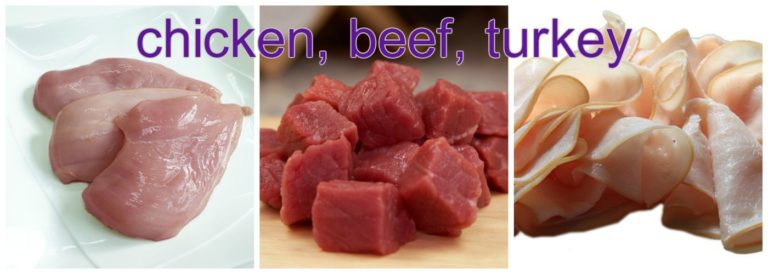
Meat
- Chicken
- Turkey
- Lamb
- Liver
- Beef
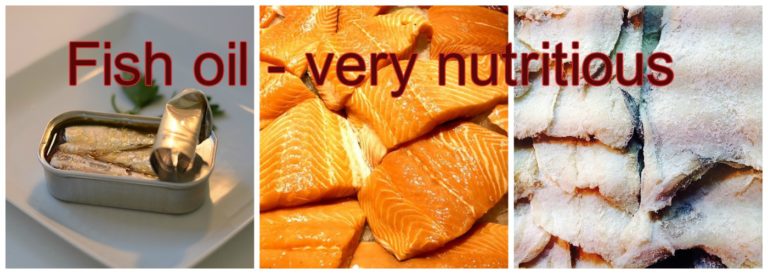
Fish
- White fish
- Cod
- Salmon
- Sardines
- Some tuna oil
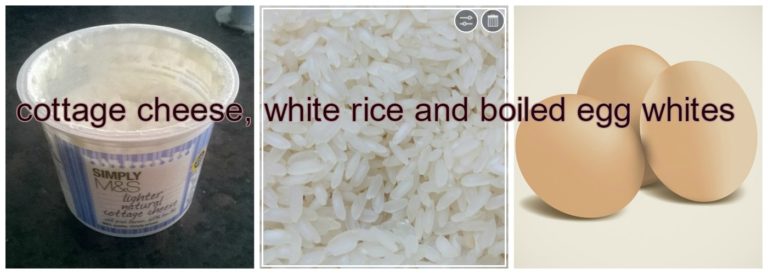
Misc
- A drop of fat free cottage
- Canned food if he’s only getting dry
- White part of a boiled egg
- Plain non fat yogurt
- White rice
- Quinoa
- Baby food (I have read of many senior pup parents who add chicken or meat baby food to their diet)
Boiling some chicken with carrots and sweet potatoes is a great addition. Freeze the soup in ice cube trays and defrost as needed. A little splashed on his plain food adds a bit of interest.
How to get an old dog to eat – conclusion
I understand all too well how frustrating and even stressful it can be, watching your dog turn his head away from the bowl he used to dive into. Sometimes it’s just a passing phase – a skipped meal due to an upset stomach or feeling under the weather. When it comes to Red I call my vet immediately simply because it’s too out of character, and I’m not willing to take a “wait and see” attitude given her age and medical issues.
If it’s just a case of your dog getting bored with the “same old same old” the suggestions listed here will help.
Have you had challenges with your old dog not eating? What were the reasons and how did you get him eating again? Why not share your story in the comments section below or on my Facebook page.
I would like to invite you to join Senior Dog Care Club, a new Facebook group for senior dog parents. There you will find lots of helpful tips and advice, a place to ask questions and share experiences. I look forward to welcoming you.

 How to Correct Bad Behavior in Dogs
How to Correct Bad Behavior in Dogs
Hi Hindy,
Love your article and the valuable information it contains for senior dog owners.
I love your writing style, the logical outline with a conclusion is a great idea for content-loaded posts like this.
You can easily go to the specific information you need and everything is easy to read and comprehend.
Hope Red is eating better now.
Best,
Surbhi
Thank you Surbhi, so glad you find the information useful. Since my goal is for people to get the information they’re looking for, I try and present it in easy to digest chunks. Having sections divided by clear titles allows the reader to quickly find the bits they need, without having to dig too much. Make it difficult and they’ll leave.
Hi Hindy,
This is a very helpful article! Thanks for taking time to share it! I have several people with oldies who I plan to share it with!
A couple of things that helped me with my girl were 1: to soften her prescription kibble, and the mash it. To that I could add home prepped food and she got the best of both worlds!
2: when she would eat nothing else, she would eat a bit of baby food. I always got the kind that was just meat and broth; chicken or beef.
God bless, Hindy!
Emilie
Thanks Emilie. Great ideas…sometimes we have to get creative!!
My old dog also has very few teeth and I think he is having more trouble getting the food slurped up. Never used to be a problem. He is also very skittery and gets scared off easily. I have tried elevating his food but that does not seem to help. But I will try it again as it has been awhile since I tried it. Anyway, hope to get some tips from other folks.
Sorry to hear that Rachel. My best advice is to join my Facebook group, Senior Dog Care Club. You’ll find a wonderful community of senior dog parents who can offer you lots of helpful tips and advice. I look forward to welcoming you!
Love this post as Layla is aging and am monitoring her more, thanks for the list of veggies as I was not sure what to add or what not to and I am a big veggie eater so have them all in the house all the time.
She thank goodness is a good eater, loves her food with supplements, I add coconut oil and honey to her meals and she gobbles them up. She has never been a runner but loves her walks and every morning we go for a long walk as I make sure she gets as much exercise as possible..
You’re lucky Layla is such a good eater, Red used to be but things are getting difficult with her. I’m sure she loves her walks and stops for everyone she knows to make a fuss of her!!
Diminished sense of smell can certainly mess with appetite. Think what happens when you have a cold. Warming the food up helps to increase the scent (personally, I would not/have not used microwave, though, warmed up gently on the stove). Could try something really smelly such as green tripe; all dogs I’ve met go crazy for that stuff.
Red will only eat food that’s warmed up, but microwave is quickest…it’s literally just a few seconds. Thanks for mentioning tripe, I should add that.
These are great tips. We used some of them when my mom’s cat was near the end of her life. She lost interest in food, but my mom was able to coax to her eat with a lot of things similar to this.
Thank you Beth. I had a conversation with a close friend last night, and he was telling me how he’s struggling to get one of his cats to eat. She’s always been a bit of a nightmare but she’s getting worse. He’s trying to get more and more creative.
I never had a dog so I can’t testify to dealing with issues with eating with dogs, however I can testify with my experience with cats. As my cats aged once in a blue moon they would get finicky with their food. usually it meant it was time for me to overhaul their food selection to something more tasty. However when my youngest cat got ill, she was not interested in food. My old tricks ceased to work as her not eating was indicative of her illness. Poor thing. Thanks for sharing this information. Very helpful and informative.
I have had finicky cats and dogs, but in their cases it wasn’t health related it was just bratty related!